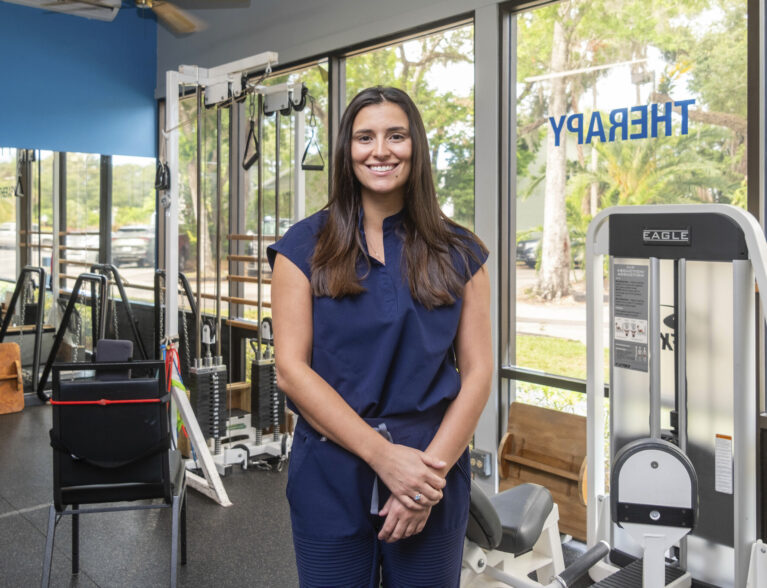
Poor diet has long been recognized as a major cause of high blood sugar and diabetes, but experts say lack of exercise plays a primary role, too.
Gabrielle Jasmin, BSN, RN, who works at the Wellness Spot located within Vero Fitness, says “exercise helps our muscles absorb glucose, which can help lower blood sugar both during and after physical activity. Exercise can also increase insulin sensitivity over time.”
The American Diabetes Association confirms that when you exercise, insulin sensitivity is increased, so your muscle cells are better able to use any available insulin to take up glucose during and after activity. And when your muscles contract during activity, your cells can take up glucose and use it for energy whether insulin is available or not.
“Type 2 diabetes develops when your pancreas doesn’t make enough insulin or any at all, or when your body isn’t responding to the effects of insulin properly,” according to Cleveland Clinic.
“Glucose (sugar) mainly comes from carbohydrates in your food and drinks. It’s your body’s go-to source of energy. Your blood carries glucose to all your body’s cells to use for energy.
“But the glucose in your bloodstream needs help – a ‘key’ – to reach its final destination. This key is the hormone insulin. If your pancreas isn’t making enough insulin or your body isn’t using it properly, glucose builds up in your bloodstream, causing high blood sugar (hyperglycemia) and diabetes.
These conditions are huge health problems in the United States. The American Heart Association reports that, as of 2024, 29.3 million adults in the U.S. have diagnosed diabetes, 9.7 million have undiagnosed diabetes, and 115.9 million have pre-diabetes.
“Both diet and exercise are equally crucial in maintaining optimal blood sugar control. Diet controls sugar intake, while exercise helps burn glucose and improve insulin function.
Ultimately, to optimize glycemic control, exercise and diet should work synergistically,” Jasmin says.
Mayo Clinic reports that proper exercise can help you:
- Improve your blood sugar levels.
- Boost your overall fitness.
- Manage your weight.
- Lower your risk of heart disease and stroke.
- Improve your well-being.
To exercise safely, some people with diabetes need to track their blood sugar before, during and after physical activity. This shows how the body responds to exercise. And it can help prevent blood sugar swings that could be dangerous. You should always consult with your medical professional before beginning an exercise program.
All workouts are not created equal when it comes to reducing blood sugar. Jasmin explains, “High-intensity workouts boost glucose uptake and improve insulin sensitivity because our muscles use more glucose for energy, directly lowering blood sugar levels. Strength training increases muscle mass, which in turn increases glucose storage and reduces blood sugar levels” in a different way.
You don’t have to run a marathon to benefit from exercising. Moderate exercise like walking makes your heart beat a little faster and your lungs pump a little harder, and your muscles use more glucose.
Over time, this can lower your blood sugar levels. It also makes the insulin in your body work better. These benefits remain for hours after your walk or workout.
Just remember not to overdo it. Strenuous exercise can sometimes increase blood sugar temporarily after you stop exercising. Very intense exercise can cause the body to make more stress hormones, which can cause an increase in blood sugar.
Strength training is especially important for older people who need to lower their blood sugar, explains Jasmin. “As we age, we lose muscle mass, which can impair glucose control. Strength training preserves muscle, enhances insulin sensitivity, and reduces the risk of type 2 diabetes complications,” she says.
The National Council on Aging concurs, advising that resistance training helps build lean muscle mass, something that’s essential for older adults as well as people with type 2 diabetes. Losing muscle makes it more difficult to maintain stable glucose levels. Weight training doesn’t necessarily mean lifting big, heavy weights. You can achieve results using machines, small free weights or resistance bands.
Jasmin says she doesn’t believe there’s a clear-cut answer to whether the time of day you work out matters. “I’d have to say yes, and no. Morning workouts may improve insulin sensitivity, or how well our body uses insulin to move sugar out of our blood, throughout the day.
“Post-meal workouts can help reduce blood sugar spikes. But consistency and what works best for your individual body matters more than timing,” she says.
If you learn that you have diabetes or pre-diabetes, get started on an exercise program as soon as you can. “In early stages, the body is more capable of reversing insulin resistance,” explains Jasmin. “Exercise can improve glucose control and could potentially prevent or reduce the need for medication.”
On the road to lowering your blood sugar, you’ll find many related health benefits, says Jasmin. “More energy, enhanced mood and cognitive function, reduced inflammation, stronger immune system, reduced risk of complications such as neuropathy or vision loss, and an improved metabolism are just some of the positive effects that you will enjoy,” she explains.
Gabrielle Jasmin has a BA in Biology, RN, BSN in Nursing, and an MSN with a Concentration in Functional Nutrition and Herbal Therapy. She works at the Wellness Spot, which offers a whole-body approach to wellbeing. It is located at Vero Fitness, 1060 6th Ave., Vero Beach. For information, call 772-481-WELL.



